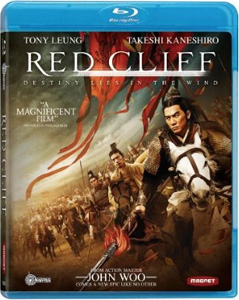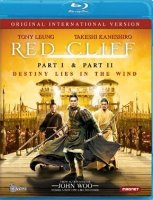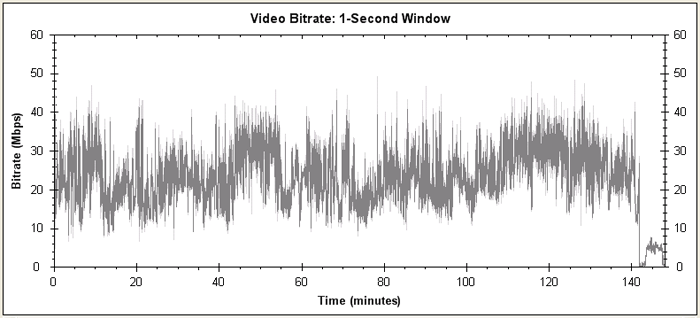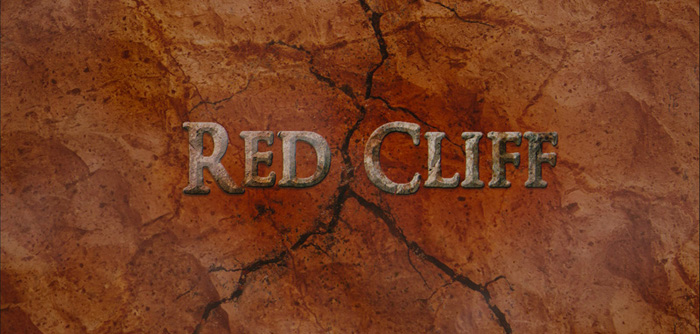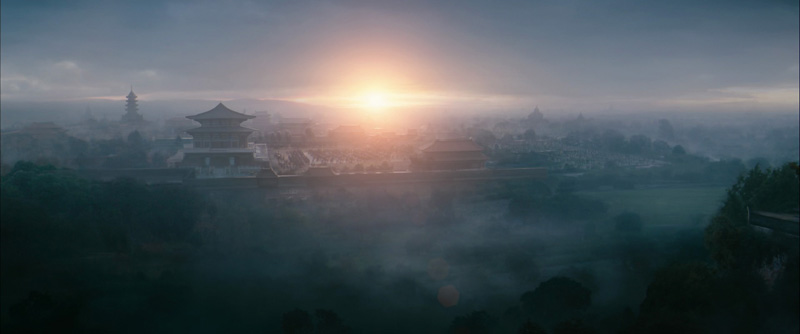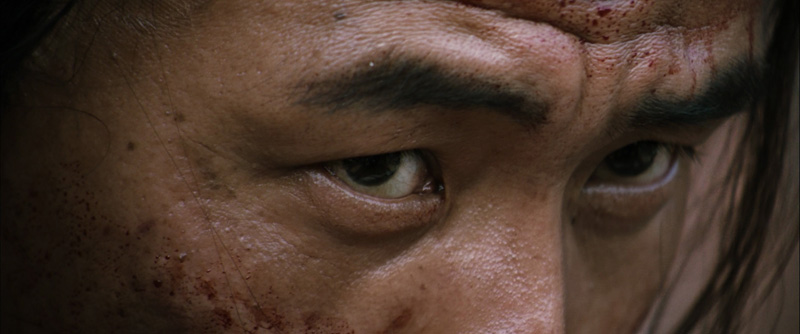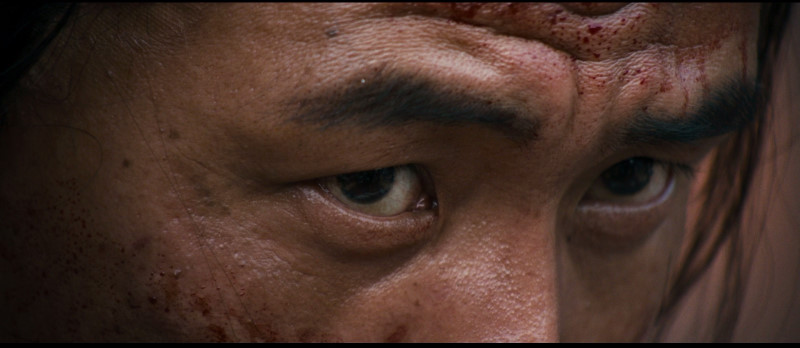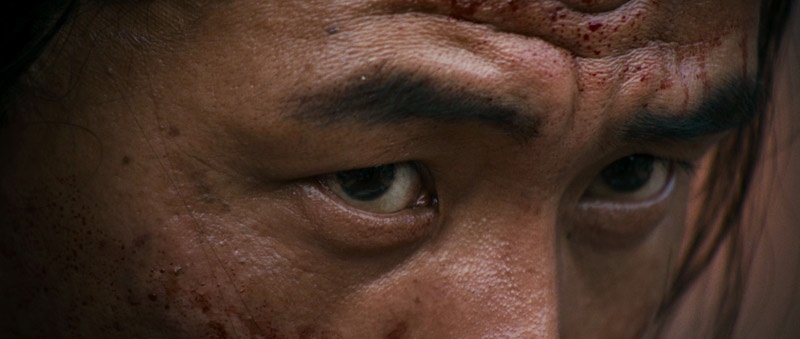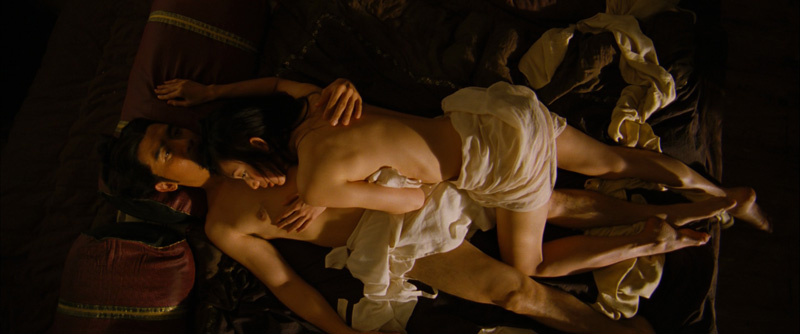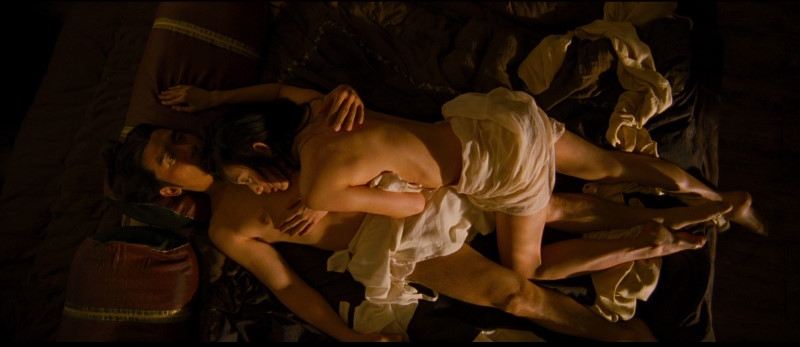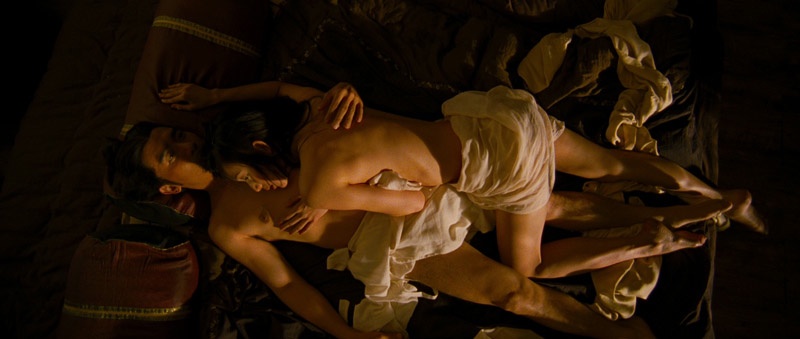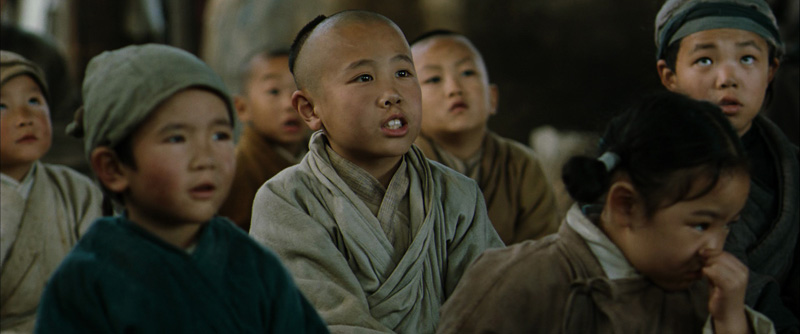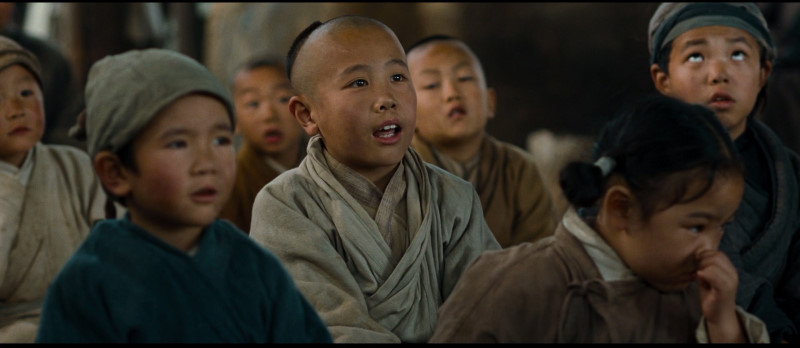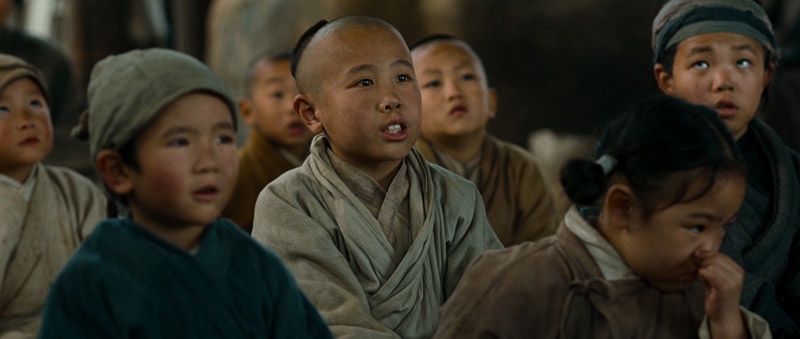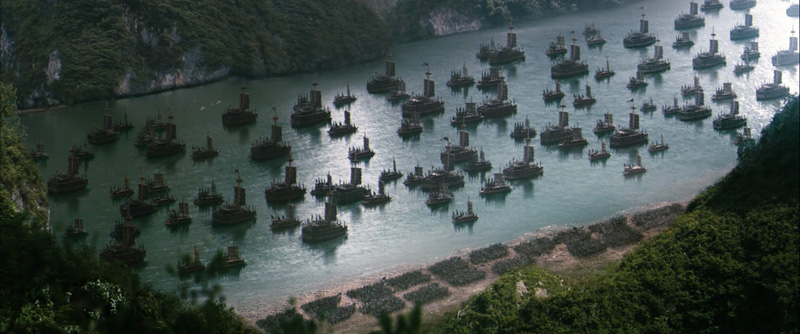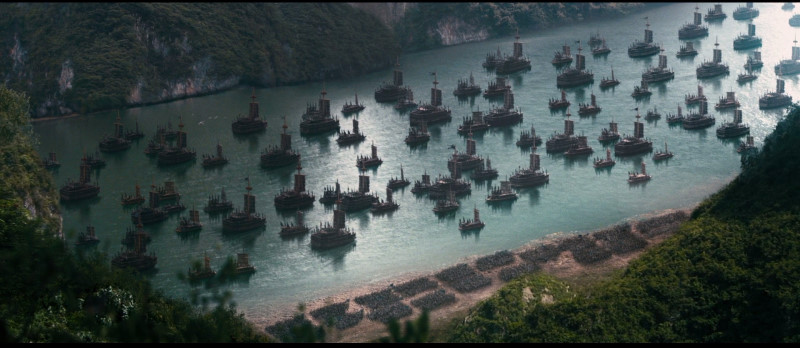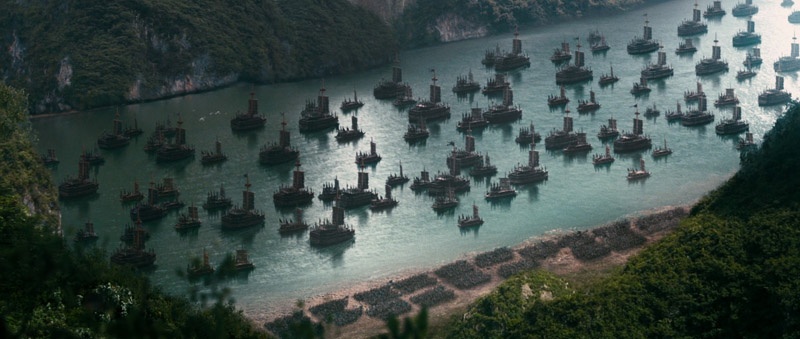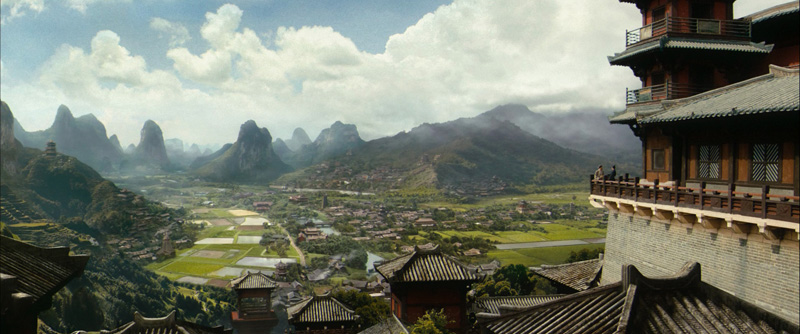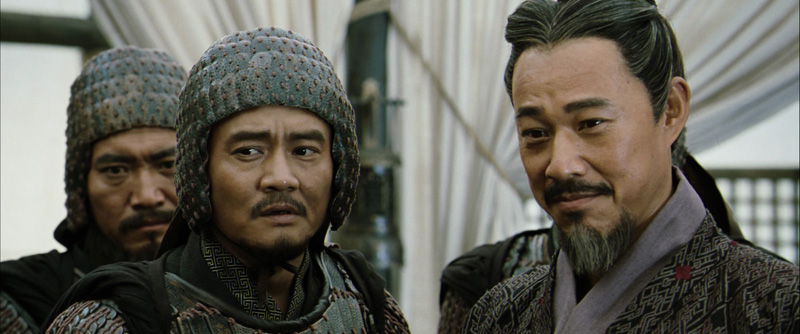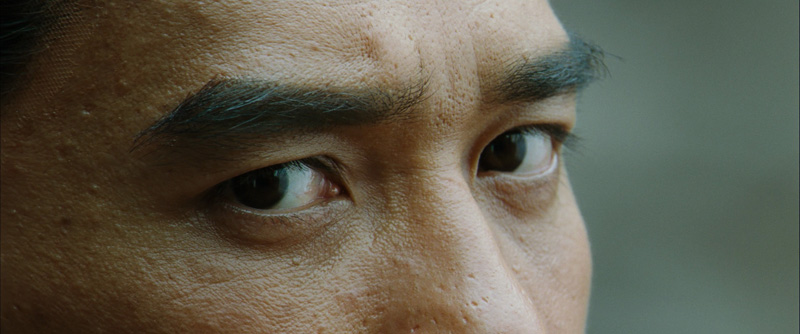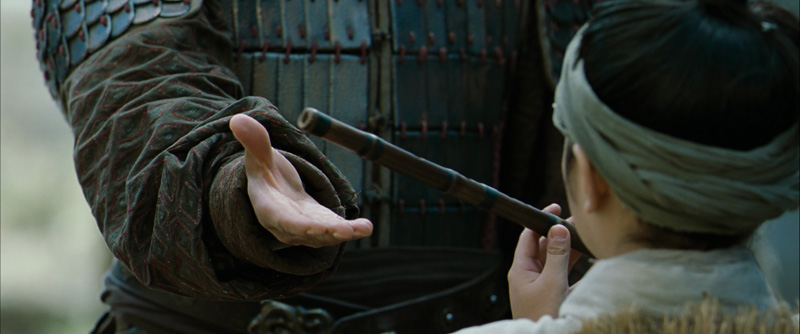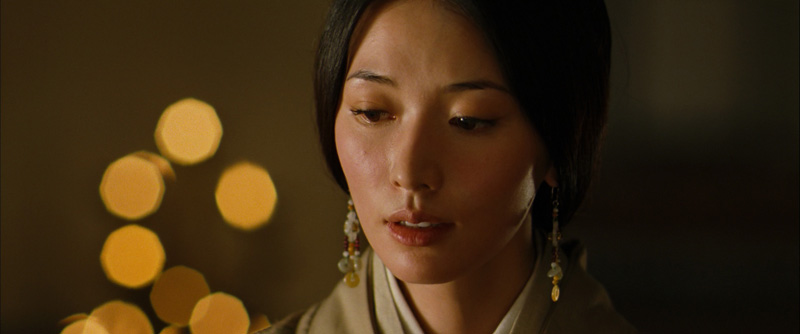|
Red Cliff (American
Theatrical Version) [Blu-ray]
(aka "Chi bi")
(John Woo, 2008)
Red Cliff, Part I/Red
Cliff, Part II also available in this package
from Magnolia:
Review by Leonard Norwitz
Studio:
Theatrical: Lion Rock
Blu-ray: Magnet (Magnolia Home Entertainment)
Disc:
Region: FREE!
(as verified by the
Momitsu region FREE Blu-ray player)
Runtime: 2:27:58.870
International (Part 1):
2:25:24.966
Disc Size: 48,763,758,668 bytes -
International (Part 1): 48,024,931,295
bytes
Feature Size: 35,080,126,464 bytes
International (Part 1): 36,213,915,648
bytes
Video Bitrate: 22.95 Mbps
International (Part 1): 27.54
Chapters: 17
Case: Standard Blu-ray case
Release date:
March 23rd, 2010
Video:
Aspect ratio: 2.35:1
Resolution: 1080p / 23.976 fps
Video codec: VC-1 Video Video
Audio:
DTS-HD Master Audio English 2522 kbps 5.1 / 48 kHz / 2522
kbps / 24-bit (DTS Core: 5.1 / 48 kHz / 1509 kbps / 24-bit)
DTS-HD Master Audio Chinese 4203 kbps 5.1 / 48 kHz / 4203
kbps / 24-bit (DTS Core: 5.1 / 48 kHz / 1509 kbps / 24-bit)
Subtitles:
English (SDH), English, Spanish,
none
Extras:
• The Making of Red Cliff: The Long Road – in SD (145:45)
• A Conversation with John Woo – in HD (27:00)
• HDNet: A Look at Red Cliff – in D (4:35)
• Storyboards
The Film:
7
So, the question is: Is John Woo's four and a half-hour,
two-part original version of Red Bluff unnecessarily long or
have sufficient padding that it not only could stand some
cutting here and there, but perhaps benefit from it? I can't say
I feel I know the film well enough to comment definitively – not
after a single viewing of both the original "International" and
the American Theatrical cuts. But I have never felt that Woo's
ideas about pacing are gospel, though they are his. I feel he is
more in love with the beauty of a scene than its place in the
overall arc of his movie. His finales seem to have an inertia of
their own, almost in defiance of the needs to resolve things of
everything up to that moment. I have always felt the lengthy
motorboat chase at the end of Face/Off to be destructive of the
tension. Excitement should not devolve into exhaustion, but Woo
worries the question more than most.
Cutting internally is another matter. Subplots, fleshing out of
characters, extended metaphors for this or that relationship –
these have special cumulative power in a film, as does the
intercutting between scenes. If you pare away at scenes A & B,
and cut between them, as he does with Cao Cao's invasion of the
village where Liu Bei's wife and child are trying to escape, the
effect on the audience will have to be different. In the
truncated version, for example, wife and child aborted escape
are abbreviated to a few gasps; we don't even see how she dies.
And we are proportionally cheated out of General Zhao Yun's
heroic attempts to rescue both wife and child, just as his
sudden appearance on the battlefield wreaks havoc with our sense
of time and space. There are risks and dangers with cutting.
Enough said.
While the case of the old truncated American cut of Seven
Samurai immediately comes to mind, my impression (for now) is
that it had a better chance of making sense and standing on its
own. While Red Bluff is no Seven Samurai, what hopes it has of
offering a completely satisfying dramatic experience is trashed
by such evisceration that would make even RKO blush. You think
The Magnificent Ambersons had it rough! Whatever we feel about
Red Bluff in its American version, it is clear that the
International Version takes time to reflect and develop stories
within stories and relationships that enhance our sympathy for
what is at stake for both sides of the war.
One more thing: The home theatre experience is different from
the Cineplex experience in a way that doesn't get much play in
these columns: At home, we can stop and start a movie as we do
reading a novel. A five-hour movie isn't likely to be watched in
five hours of real time, and it might not even be seen over only
two uninterrupted sittings. Even Wagner's Ring cycle is
performed over four nights, and each act is separated by a
substantial intermission. We can watch the movie again and
again, replaying scenes - as encores or for clarification - in
the middle of things. We might even openly engage in discussion
with others in the room – something we are expected not to do in
the theater on pain of raspberries. So, even though I make
noises about tension and arc and all, I know that everyone's
actual mileage is likely to be different, as it will be every
time we see it.
The story of Red Cliff (named for the fortress held by Yu Zhou)
takes place in the early part of the third century and centers
around a legendary battle that would bring about the end of the
Han Dynasty (and eventually spawn Luo Guanzhong's classic 14th
century novel "The Romance of the Three Kingdoms.") Power hungry
Prime Minster (now "General") Cao Cao (Zhang Feng Yi) has
convinced the young and easily intimidated emperor that two
southern warlords, Liu Bei (Yu Yong) and Sun Quan (Chang Chen)
represent potential insurgencies and a threat to the throne. To
add some spice to the hunt, Cao Cao also has designs on the
beautiful Xiao Qiao (Lin Chi Ling), the wife of Viceroy Zhou Yu
(Tony Leung Chui Wai.) Kong Ming (aka: Zhuge Liang, played by
Takeshi Kaneshiro), the brilliant military strategist to Liu Bei,
attempts to unite the southern forces with those of Zhou Yu in a
defense against Cao Cao, who armies and navy greatly outnumbers
the combined armies of the south.
Image:
9/9
NOTE:
The below
Blu-ray
captures were taken directly from the
Blu-ray
disc.
The first number indicates a relative level of excellence
compared to other Blu-rays on a ten-point scale. The second
number places this image along the full range of video discs,
including DVDs.
With a feature film bit rate that spreads from the upper 20s
through the low 30s, the feature takes up only about 71% of the
disc space, as compared to 92% on the Mei Ah for Parts 1 or 2.
You might guess the reason has to do with the sizable extra
features on the Magnet as compared to the Mei Ah. But there are
other factors.
Yes, the Mei Ah appears to be denser, partly a function of its
relatively higher black level. The Mei Ah presents a grittier
movie – a film that takes itself seriously. On the other hand,
clearly the Magnet is lovelier to look at – its very brightness
makes it more agreeable without appearing to sacrifice solidity.
It's only when compared directly to the Mei Ah that we wonder
which is the more accurate in terms of contrast. There is a
fairly consistent difference in color, with the Mei Ah appearing
more saturated and redder. To my eye, the Magnet offers the more
natural color.
I found no transfer issues of concern – not that there is much
of a chance to reflect on the question thanks to Woo and his two
cinematographers, Lu Yue and Zhang Li, and Tim Tip's fantastic
production and art design. The print is quite clean and the
occasional "HD" logo that appeared on my Mei Ah from time to
time in the upper left corner has vanished.
CLICK EACH
BLU-RAY
CAPTURE TO SEE ALL IMAGES IN FULL 1920X1080 RESOLUTION
Magnet Blu-ray TOP
vs. Mei Ah Blu-ray (REVIEWED
HERE) MIDDLE vs. International versions BOTTOM
Magnet Blu-ray TOP
vs. Mei Ah Blu-ray (REVIEWED
HERE) MIDDLE vs. International versions BOTTOM
Magnet Blu-ray TOP
vs. Mei Ah Blu-ray (REVIEWED
HERE) MIDDLE vs. International versions BOTTOM
Magnet Blu-ray TOP
vs. Mei Ah Blu-ray (REVIEWED
HERE) MIDDLE vs. International versions BOTTOM
More US Theatrical
Blu-ray caps
Audio & Music:
7/8
On its own terms, the Chinese DTS-HD MA 5.1 offers plenty of
dynamics, weight, clarity, snap, immersive battle scenes, but
compared to any of the uncompressed 7.1 tracks on the Mei Ah,
which has more bite as well as more nuance, spaciousness and
presence. Even the dialogue has gravity without sacrificing
clarity. I doubt the reason has anything to do with the being
5.1 and the other 7.1, but that the American Theatrical Version
had to be so severely cut, oftentimes right in the middle of a
battle sequence, that something was lost in the translation.
Speaking of which, I finally gave up on the very unpromising
English dub when General Zhang Fei yells "Charge" sounding a
little too much like Arsenic and Old Lace's Teddy Roosevelt.
Operations:
7
The menu is in English only, with all functions easy to access.
Extras:
5
The new Magnet Blu-ray offers not only more bonus features, but
they are subtitled where necessary. The sprawling, making-of
diary may be in need of editing, but one can hardly fault it for
scope, covering the year of shooting with comments by the
filmmakers and cast (along the clearly identified with
subtitles, I might add.) This two and a half hour documentary is
presented in a thin 4:3/letterboxed image that is exhausting to
watch, all the more so as the subtitles cover as much of the
frame as it does. However, it is important that it exists for
those of us who want to know in some detail the hows and whys
behind John Woo's movie.
Watching however many hours we choose of Red Bluff, it is easy
to forget that John Woo, who speaks English perfectly well, is
the director of several films with English-speaking actors from
Hard Target in 1993 to Paycheck in 2003, including Face/Off
(1997) which demonstrates conclusively to American audiences
what a brilliant director of actors he is. So here he is in an
interview with Talk Show host Leo Quinones – it's worth a listen
and a look, being in exemplary HD. The HDNet segment is what
you'd expect: an extended trailer. The Storyboards consist of 98
beautiful drawings whose only drawback is their size: small and
SD.
|
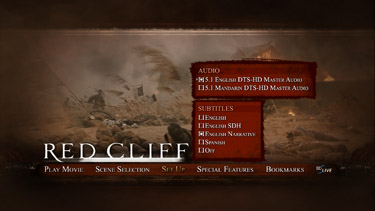
|
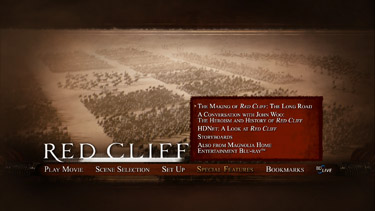
|
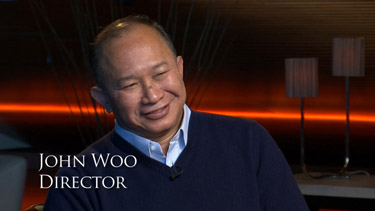 |
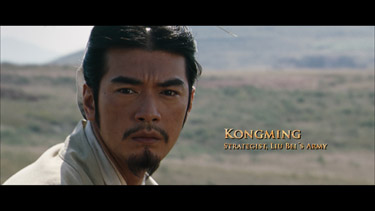 |
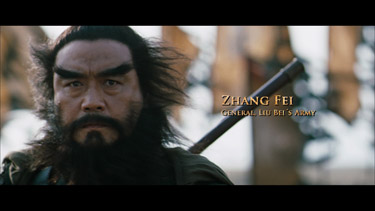 |
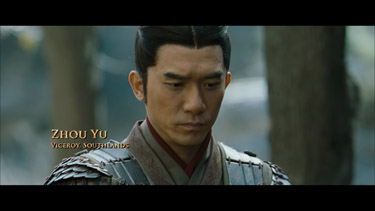 |
Bottom line:
7
My vote is for the original International Version, which is only
a few dollars more for twice as much movie. In both versions,
there are moments where characters discuss, argue, play music
and make love, but it strikes me as hurried even if you've never
seen the original film. Even without having Magnolia's
International version to compare, short of an unexpected snafu,
I can't imagine that its image or audio would be less good, and
it has a couple of extra bonus features in the bargain. Or, you
can have both. Then the only question is whether to get
Magnolia's 2-parter if you already have the Mei Ah.
Addendum:
April 4th, 2010
As you can infer from the new caps of the Magnolia/Magnet
Blu-ray from the International Version of Red Cliff Part 1,
these are closer in color, density and crop to the Mei Ah than
their U.S. Theatrical. The overall bit rate for the disc is
27.54 Mbps as compared to 39.34 for the Mei-Ah and 22.95 for the
U.S. Theatrical release.
As for the audio, the Meh Ah DTS-MA 7.1 Mandarin is marginally
to be preferred to the Magnolia/Magnet International, though the
latter is closer to the Mei Ah than to the U.S. Theatrical. The
Mei Ah offers just a little more nuance, dynamics and presence –
but not by much this time. Both Magnolia/Magnet editions are in
5.1 only for those of you that can't take advantage of discrete
rear channel information.
Of course, the complete Magnolia/Magnet now has more extra
features, all with English subtitles, and it includes Part 2 as
well for much lower cost than the two parts separately on Meh
Ah. The complete Magnolia, like the Mei Ah, does not include an
English dub, or any opening narration or a text introduction.
Nor does it have those handy nametags that cue the unaccustomed
Western eye to the dramatis personae. It does, however, include
English and Spanish subtitles.
Leonard Norwitz
March 20th, 2010
Red Cliff, Part I/Red
Cliff, Part II also available in this package
from Magnolia:
|
![]()
![]()

![]()
![]()

![]()
![]()

![]()
![]()
